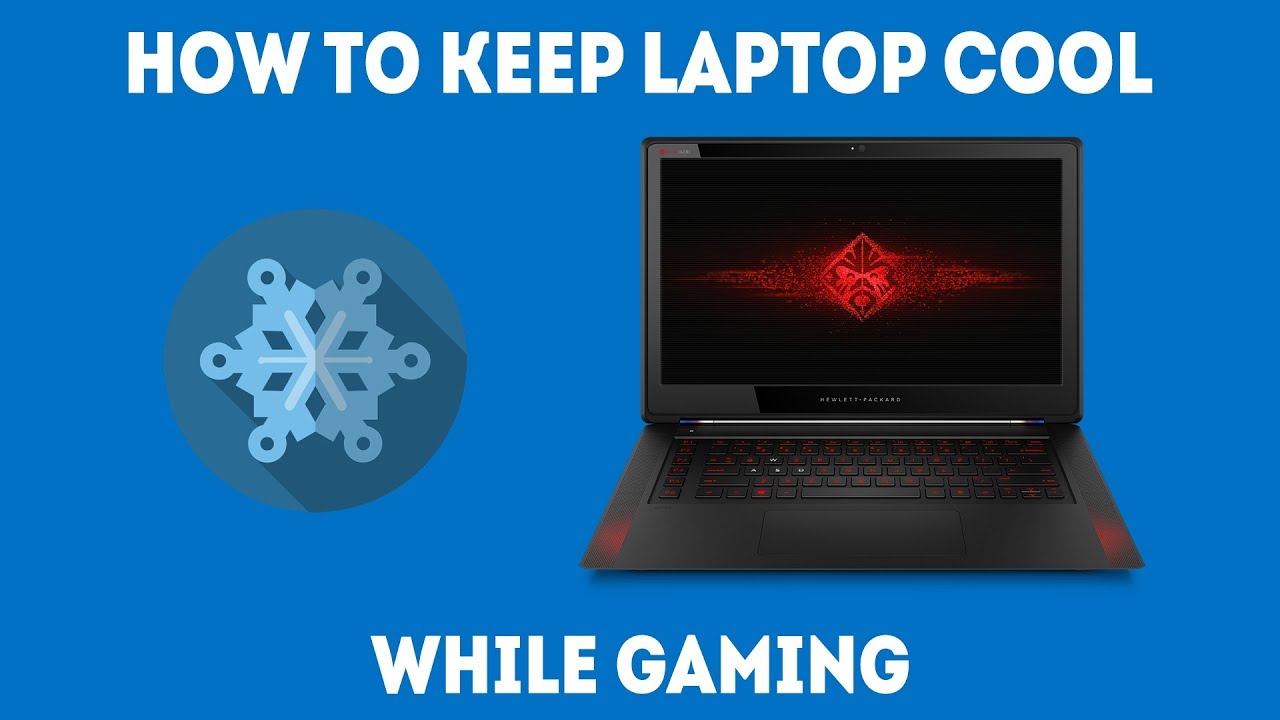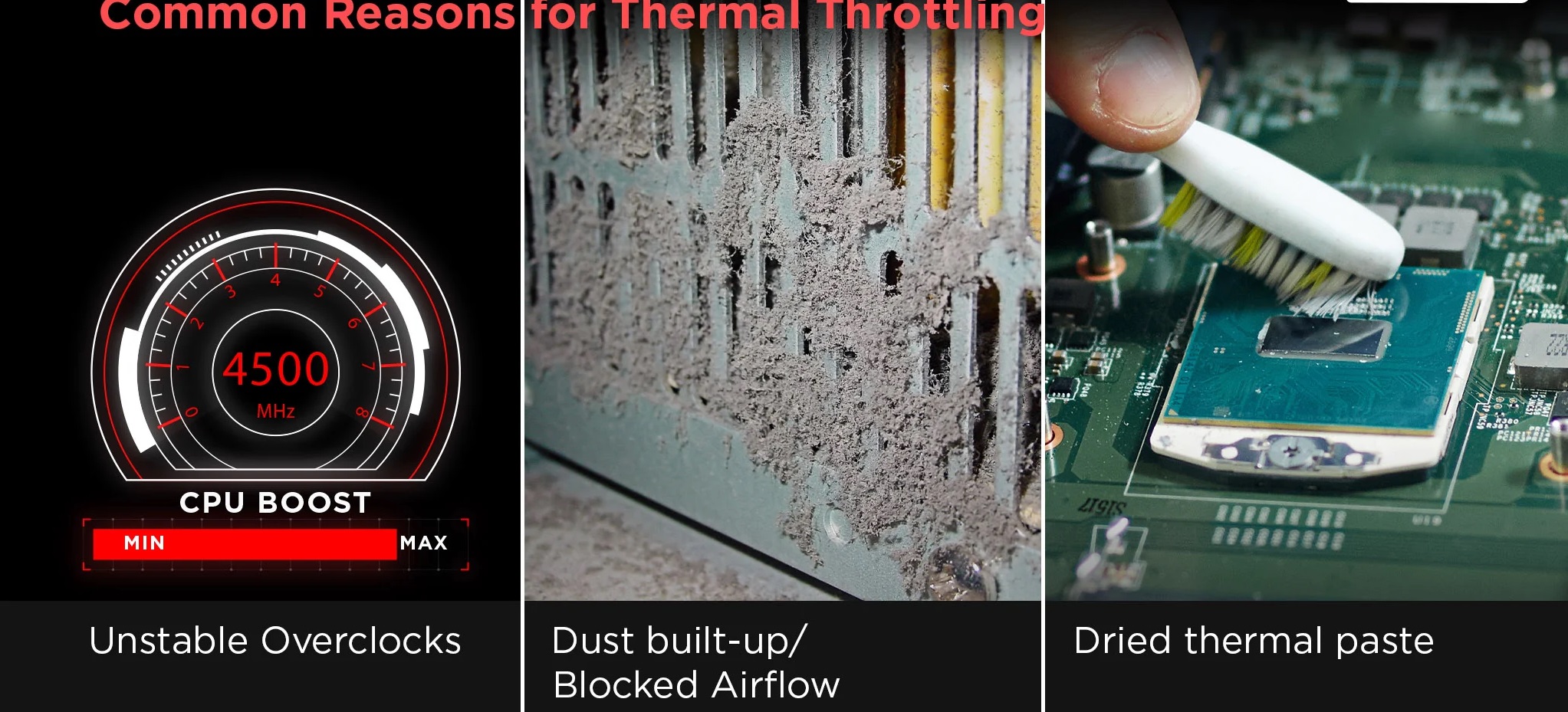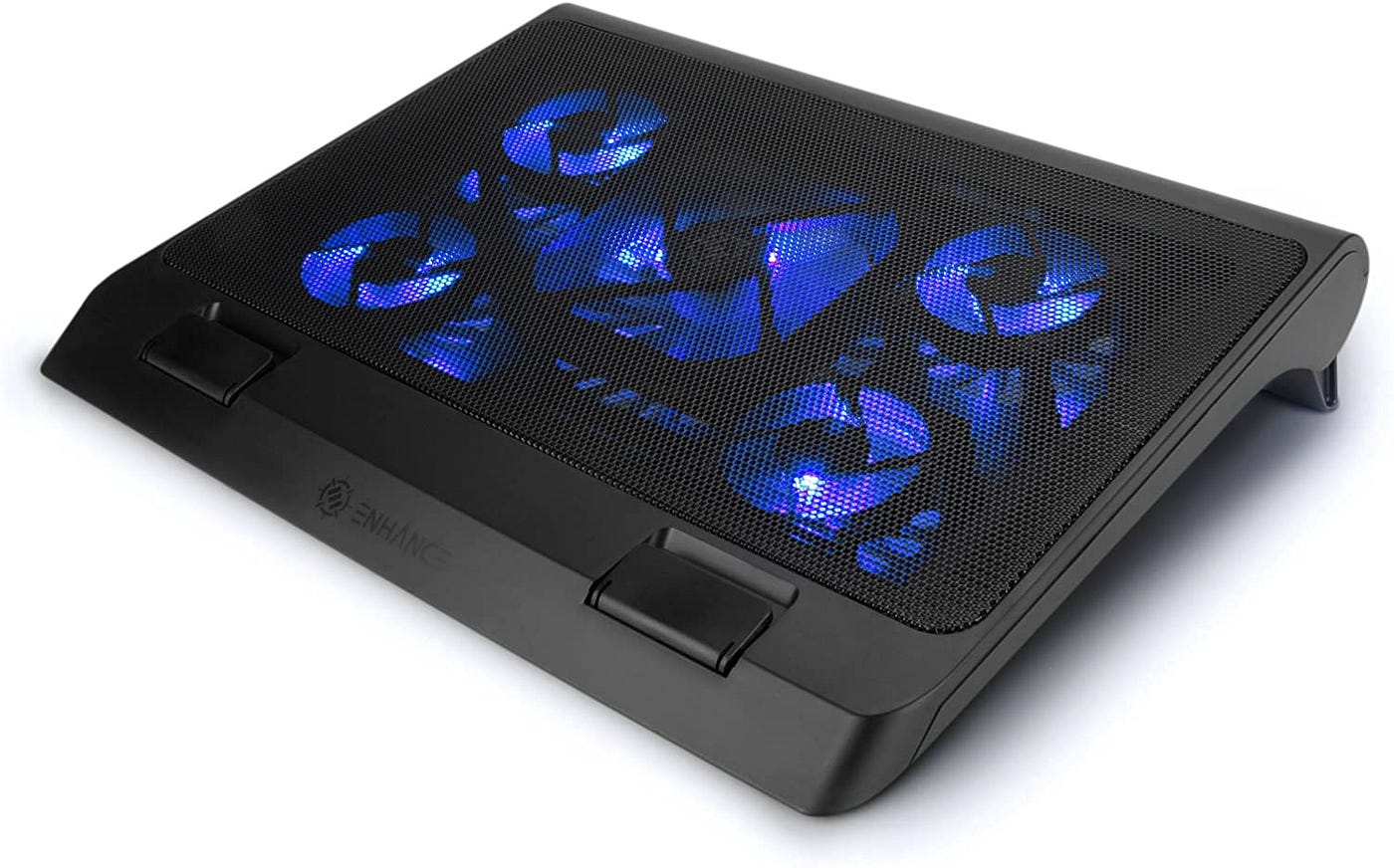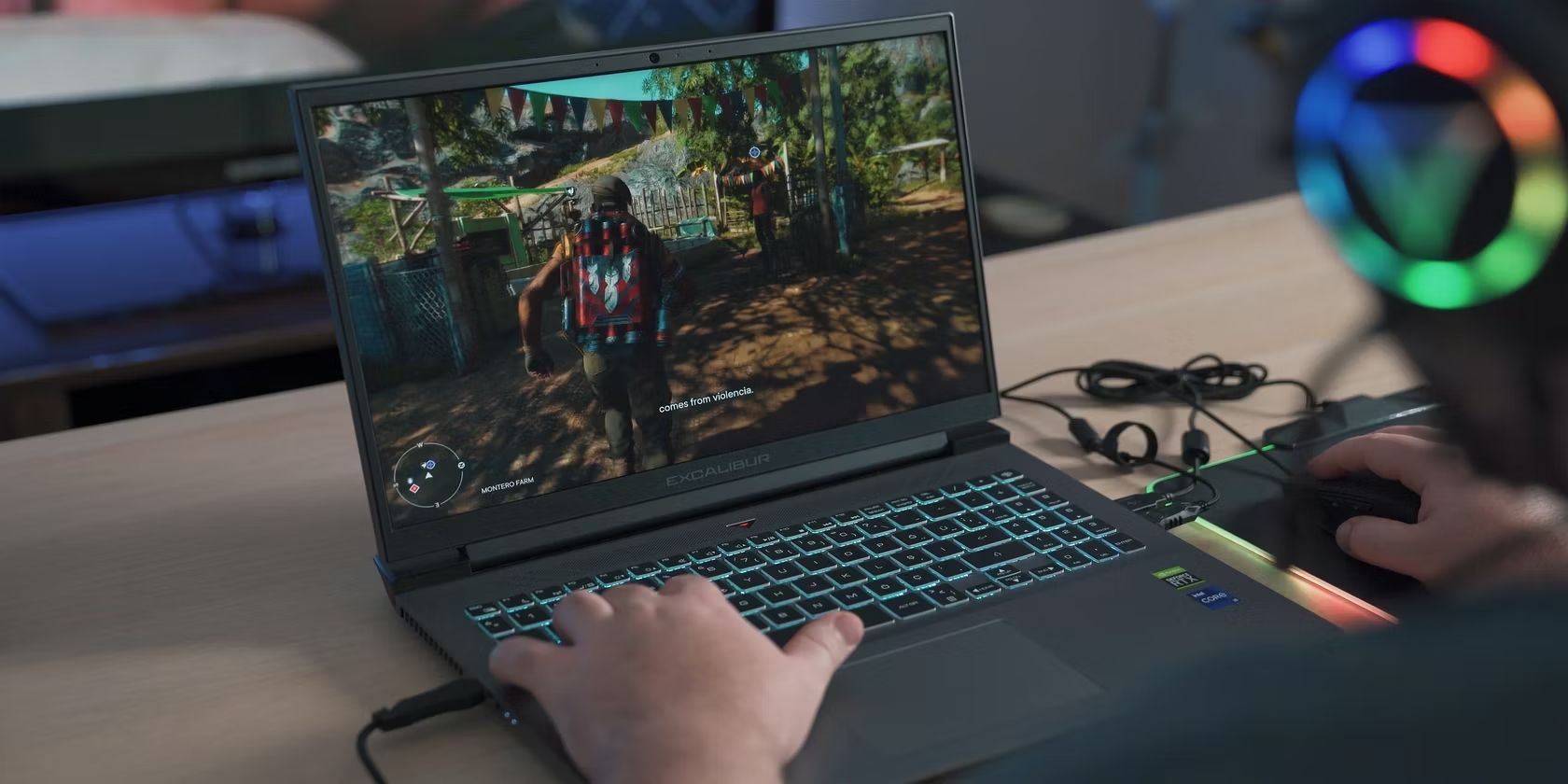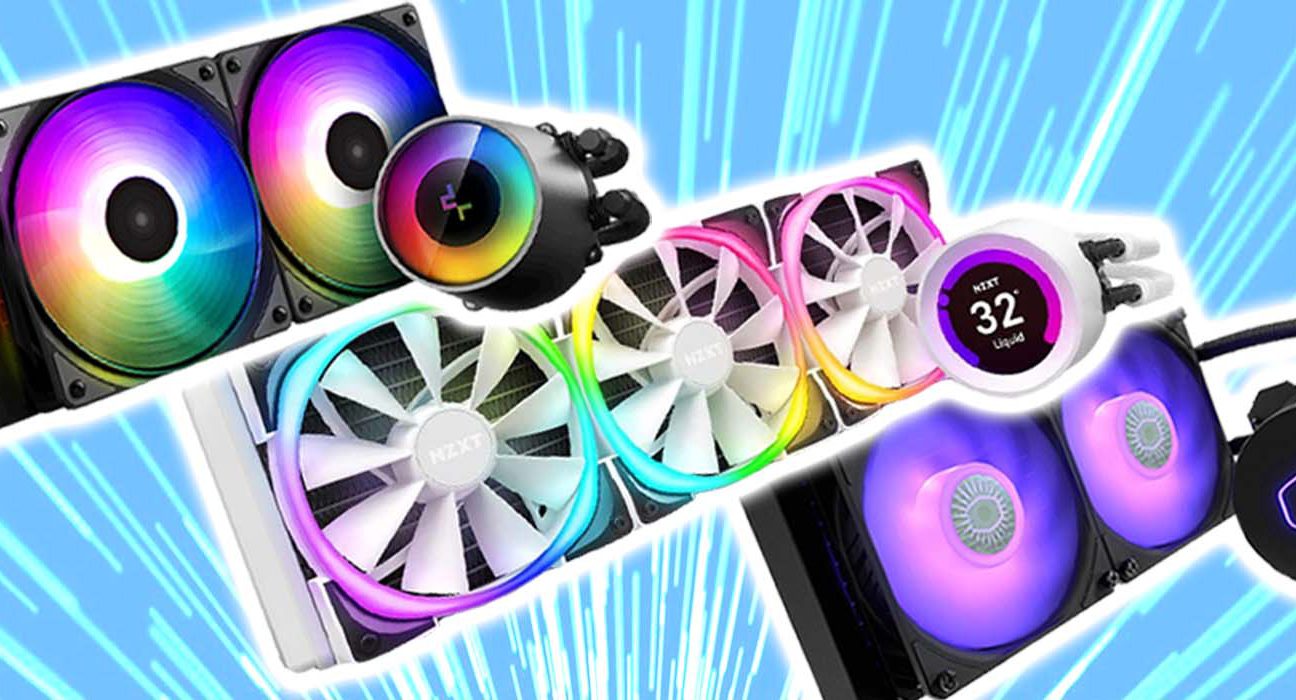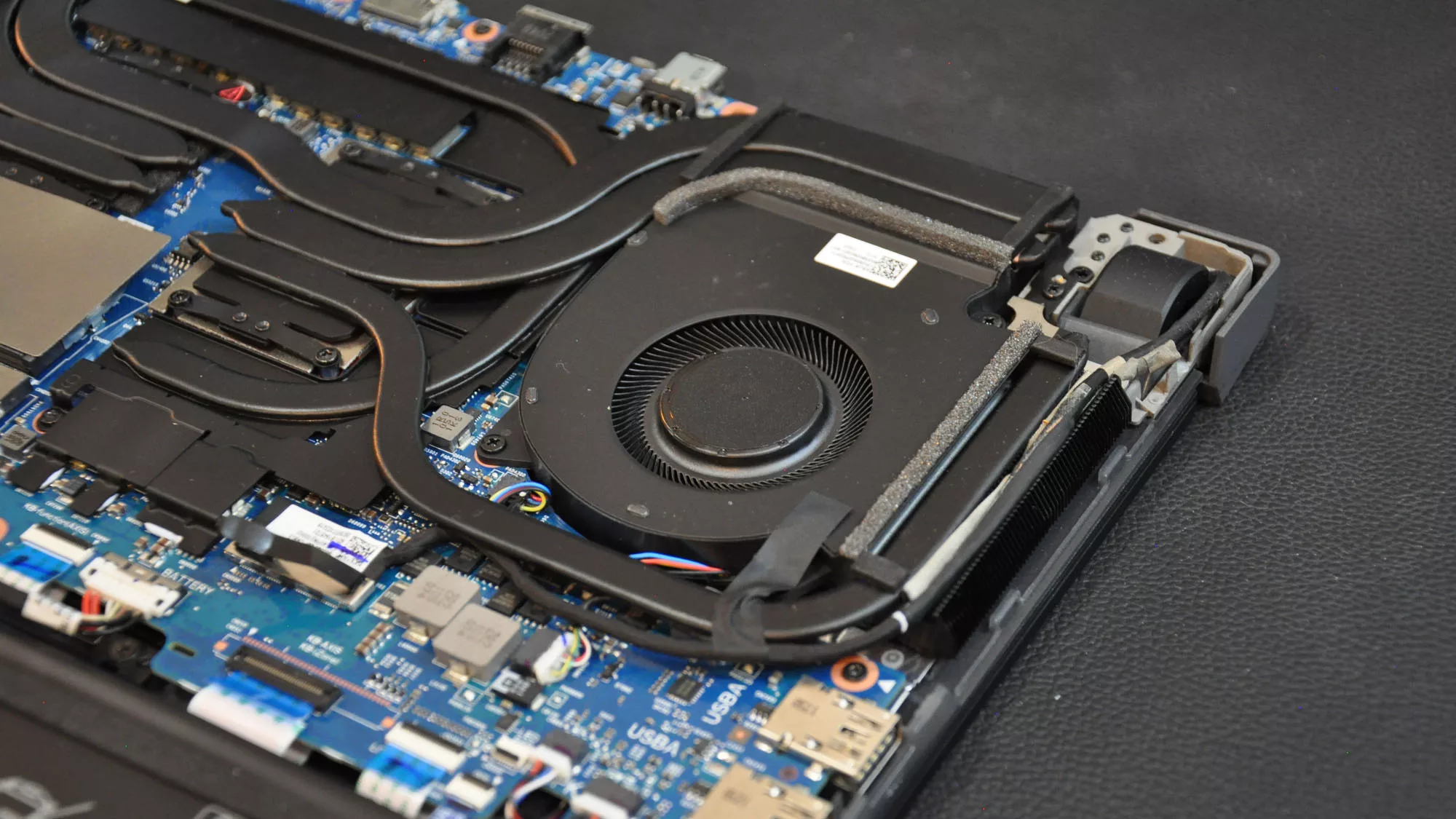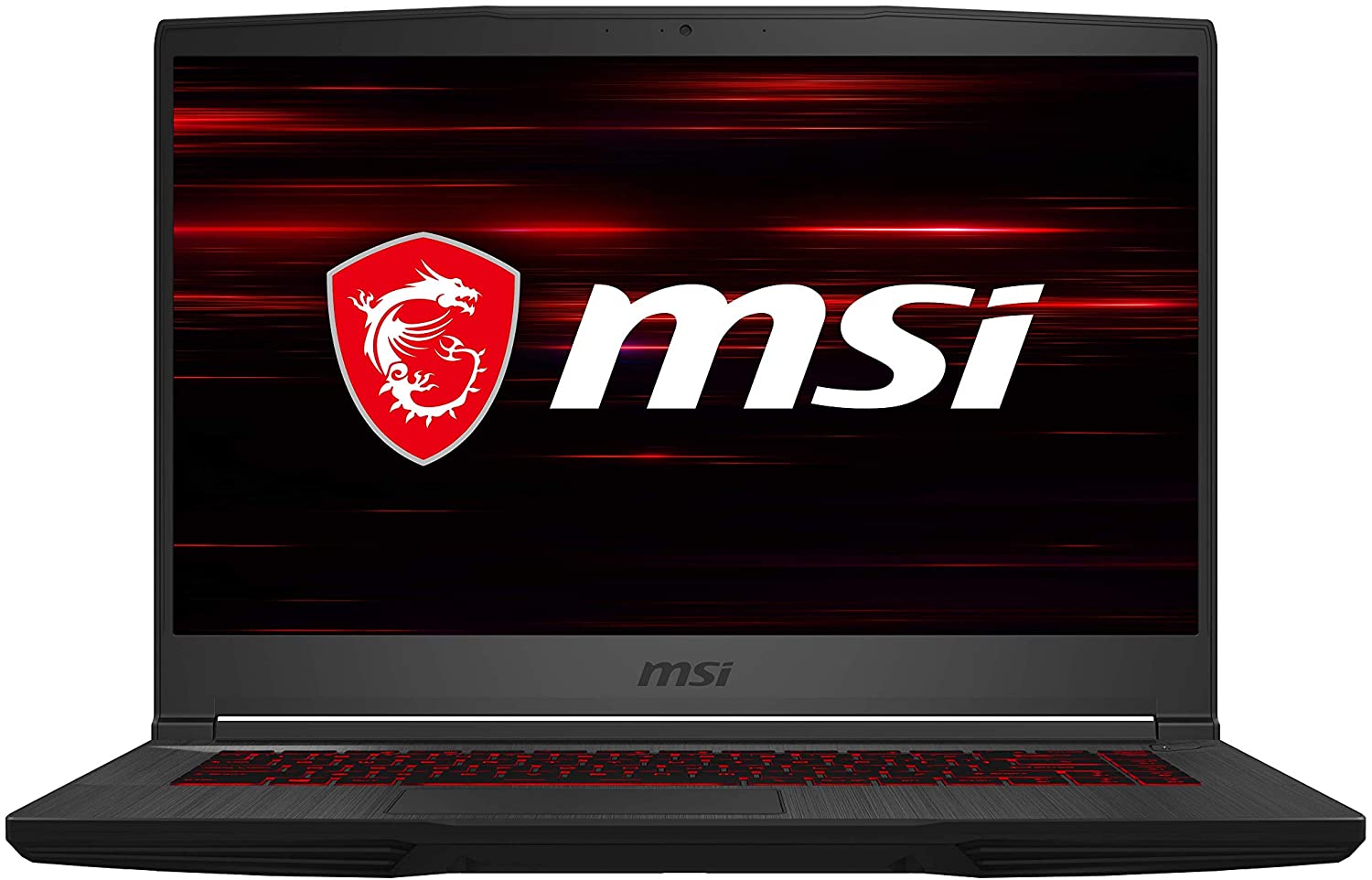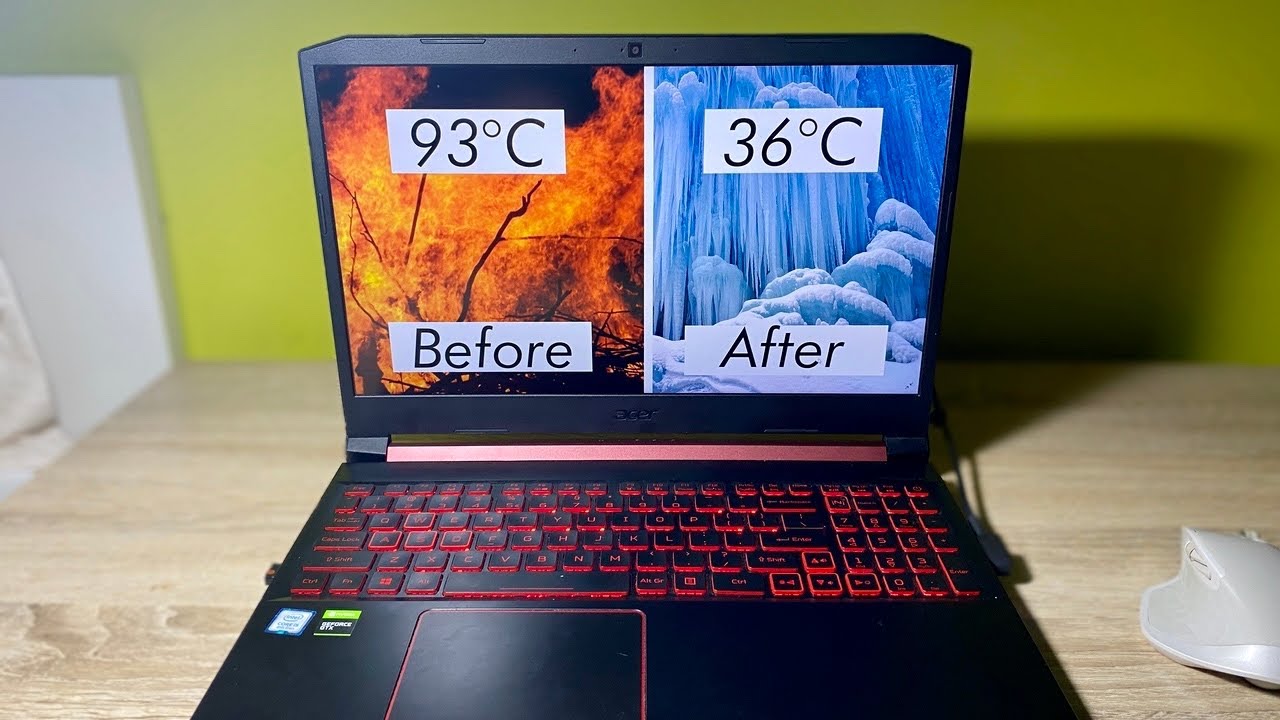Introduction
Welcome to the world of laptops, where convenience and portability meet high-performance computing. Laptops have become an essential tool for both work and leisure. However, with their compact designs and powerful components, laptops can sometimes suffer from overheating issues, particularly the central processing unit (CPU).
Keeping your laptop cool is crucial for its overall performance, longevity, and even your own comfort. When a laptop’s CPU gets too hot, it can lead to a slowdown in processing speed, sudden shutdowns, and in extreme cases, permanent damage to the hardware.
In this article, we will explore the importance of keeping your laptop cool and the signs that indicate your CPU may be overheating. We will also provide you with practical tips and techniques on how to cool down your CPU laptop, ensuring its optimal performance and prolonging its lifespan.
So, if you’ve noticed your laptop getting unusually hot or experiencing performance issues, grab a cup of your favorite beverage, sit back, and read on to discover the best ways to keep your CPU laptop cool and running smoothly.
Why is it important to keep your laptop cool?
Whether you use your laptop for work, gaming, or simply browsing the internet, it’s crucial to keep its temperature in check. Here are a few key reasons why keeping your laptop cool is so important:
- Optimal Performance: Heat is the enemy of electronic devices, and laptops are no exception. When your laptop’s CPU overheats, it can lead to a decrease in performance. Your laptop may become slow and sluggish, affecting your productivity and overall user experience. By keeping it cool, you ensure that it can perform at its best and handle resource-intensive tasks smoothly.
- Preventing Hardware Damage: Excessive heat can damage various internal components of your laptop, including the CPU, GPU, and motherboard. Over time, this can lead to permanent hardware failure, requiring expensive repairs or even the need for a new laptop. By keeping your laptop cool, you can prevent these costly damages and extend the lifespan of your device.
- Improved Battery Life: Heat is also detrimental to your laptop’s battery life. Overheating can accelerate the degradation of battery cells, leading to reduced battery capacity and shorter overall battery life. By keeping your laptop cool, you can help maintain the health of your battery and ensure longer-lasting power for your portable device.
- Comfortable Usage: An overheating laptop can be uncomfortable to use. The excessive heat can make the keyboard and palm rest areas uncomfortably hot, making it difficult to work or play for extended periods. By keeping your laptop cool, you can enjoy a more comfortable computing experience with cooler surfaces and reduced fan noise.
- Efficient Workflow: When your laptop is running hot, it can lead to frequent system crashes and unexpected shutdowns. These interruptions can disrupt your workflow and cause frustration. By keeping your laptop cool, you can minimize these disruptions and ensure a more efficient and uninterrupted work or gaming experience.
As you can see, there are numerous benefits to keeping your laptop cool. Not only does it enhance performance and prevent hardware damage, but it also ensures a comfortable and reliable computing experience. Now that you understand the importance of laptop cooling, let’s explore the signs of an overheating laptop and effective methods to cool down your CPU laptop in the following sections.
Signs that your laptop is overheating
It’s essential to be aware of the signs that indicate your laptop is overheating. Recognizing these signs early on can help you prevent any potential damage and take the necessary steps to cool down your CPU laptop. Here are some common signs to look out for:
- Excessive heat: If your laptop feels unusually hot to the touch, especially on the bottom or near the keyboard, it’s a clear indicator that it may be overheating. Heat dissipation issues can make the laptop surface uncomfortably hot during normal use.
- Fan noise: When your laptop’s CPU is working hard to keep up with resource-intensive tasks, the cooling fans will spin faster, resulting in increased fan noise. If you notice unusual or excessively loud fan noise, it may indicate that your laptop is struggling to cool down its internal components.
- Performance issues: Overheating can cause your laptop to experience performance problems. You may notice a significant slowdown in processing speed, frequent system freezes, or applications crashing unexpectedly. These issues can be a direct result of your CPU overheating and struggling to function properly.
- Sudden shutdowns: One of the surefire signs of an overheating laptop is random and unexpected shutdowns. If your laptop frequently shuts down by itself, it could be a protective measure to prevent damage caused by excessive heat. It’s essential to address this issue promptly to avoid further complications.
- Unresponsive keyboard or touchpad: Excessive heat can also affect the peripherals of your laptop. If you notice that your keyboard or touchpad becomes unresponsive or starts acting erratically, it could be a sign of overheating. These issues may resolve once the laptop cools down.
If you observe one or more of these signs, it’s crucial to take action to cool down your CPU laptop. Ignoring these signs and allowing your laptop to continue overheating can lead to permanent damage and costly repairs. In the next section, we will explore effective methods to cool down your laptop’s CPU and keep its temperature within a safe range.
How to cool down your CPU laptop
If your laptop is overheating, there are several steps you can take to cool down your CPU and maintain a safe operating temperature. Here are some effective methods to help you cool down your CPU laptop:
- Clean the laptop’s cooling system: Over time, dust and debris can accumulate in the laptop’s cooling system, obstructing airflow and causing overheating. Use compressed air or a soft brush to gently clean the vents, fan grilles, and heat sinks to remove any buildup. Regular cleaning can significantly improve cooling efficiency.
- Use a cooling pad or stand: Invest in a laptop cooling pad or stand. These accessories elevate your laptop, allowing better airflow underneath the device. Cooling pads often come with built-in fans that help dissipate heat more effectively. They can provide a noticeable reduction in CPU temperatures during extended use.
- Elevate your laptop: If you don’t have a cooling pad, a simple and quick solution is to prop up your laptop on an elevated surface. This can be achieved using a book, a laptop stand, or even a couple of wooden blocks. Elevating your laptop helps enhance airflow and prevents the accumulation of heat.
- Limit resource-intensive tasks: Avoid running multiple demanding applications simultaneously, as this can put a strain on your CPU and cause overheating. Close unnecessary programs and consider limiting resource-intensive tasks to keep your laptop’s temperature in check.
- Optimize power settings: Adjust your laptop’s power settings to manage power consumption and reduce heat generation. Opt for power-saving modes or customize power plans to balance performance and energy efficiency. Lowering the brightness of your screen can also help reduce heat output.
- Use a laptop cooling software: There are various software applications available that can help monitor and control your CPU temperature. These programs allow you to adjust fan speed, set temperature limits, and optimize cooling performance. Research and choose a reputable cooling software that suits your needs.
- Upgrade your laptop’s hardware: If your laptop consistently struggles with overheating, it might be worth considering hardware upgrades. Increasing your RAM or replacing your hard drive with a solid-state drive (SSD) can help reduce overall heat output. However, it’s advisable to consult a professional or refer to your laptop’s manufacturer guidelines before proceeding with hardware modifications.
Implementing these steps can significantly cool down your CPU laptop and help maintain a safe and optimal operating temperature. Remember to monitor the temperature regularly and take appropriate measures whenever you notice your laptop getting too hot. With proper cooling, you can ensure excellent performance, extend your laptop’s lifespan, and enjoy a comfortable computing experience.
Clean the laptop’s cooling system
One of the most effective ways to cool down your CPU laptop is to clean its cooling system. Over time, dust, lint, and debris can accumulate in the laptop’s cooling vents, fan grilles, and heat sinks. This buildup restricts airflow, reducing the cooling efficiency and causing the CPU to overheat. By regularly cleaning the cooling system, you can improve airflow and lower the temperature of your laptop’s CPU.
Here are the steps to clean your laptop’s cooling system:
- Turn off and unplug your laptop: Before cleaning, make sure to shut down your laptop and unplug it from the power source. This ensures your safety and prevents any potential damage to your laptop.
- Locate the cooling vents: Most laptops have cooling vents on the sides, back, or bottom of the device. These vents allow the inflow and outflow of air to dissipate heat from the CPU. Identify the location of the vents on your laptop.
- Use compressed air: To remove dust and debris from the cooling system, use a can of compressed air. Hold the can upright and use short bursts of air to blow away the dust. Be cautious not to tilt the can or hold it too close to the vents, as this can damage the internal components.
- Brush away stubborn dust: If there are stubborn dust particles that aren’t easily removed by compressed air, use a soft brush, such as a clean paintbrush or a toothbrush, to gently sweep away the debris. Be gentle to avoid causing any damage to the delicate components.
- Pay attention to the fan grilles and heat sinks: The fans and heat sinks play a crucial role in cooling your laptop’s CPU. Ensure that the fan grilles are free from dust and spin freely. Use the compressed air or brush to clean the heat sinks, which are usually located near the CPU and GPU chips.
- Repeat the process if necessary: If there is still noticeable buildup of dust, repeat the cleaning process until the vents, fan grilles, and heat sinks are free from debris. This ensures maximum cooling effectiveness.
It’s recommended to clean your laptop’s cooling system every few months or whenever you notice signs of overheating. However, if you are uncomfortable or unsure about performing this task yourself, it’s advisable to seek professional assistance or refer to your laptop’s manufacturer guidelines for proper cleaning instructions.
By regularly cleaning your laptop’s cooling system, you can improve its cooling efficiency, prevent overheating, and extend the lifespan of your CPU. This simple maintenance task goes a long way in ensuring optimal performance and reliability for your CPU laptop.
Use a cooling pad or stand
Another effective method to cool down your CPU laptop is by using a cooling pad or stand. These accessories are specially designed to enhance the airflow around your laptop and dissipate heat more efficiently. By using a cooling pad or stand, you can significantly reduce the temperature of your laptop’s CPU and improve its overall performance.
Here’s how you can utilize a cooling pad or stand to cool down your CPU laptop:
- Choose the right cooling pad or stand: There are a variety of cooling pads and laptop stands available in the market. Look for one that is compatible with the size and specifications of your laptop. Consider features such as built-in fans, adjustable height, and ergonomic design.
- Position the cooling pad or stand correctly: Place your laptop on the cooling pad or stand, ensuring that it is centered and securely supported. The cooling pad should align with the laptop’s cooling vents to optimize airflow.
- Connect the cooling pad (if applicable): If your cooling pad comes with built-in fans, connect it to your laptop using the provided USB cable. The fans will start running as soon as they receive power from your laptop.
- Elevate your laptop: One of the main benefits of using a cooling pad or stand is that it elevates your laptop, allowing better airflow underneath the device. This elevation helps in dissipating heat more effectively and prevents the accumulation of hot air around the CPU.
- Ensure proper ventilation: Position your laptop and the cooling pad or stand on a flat surface that provides sufficient ventilation. Avoid using your laptop on soft surfaces like beds or couches, as they can obstruct airflow and contribute to overheating.
- Monitor temperature and adjust as needed: While using a cooling pad or stand, keep an eye on your laptop’s temperature. Some cooling pads or stands come with built-in temperature sensors or control knobs, allowing you to adjust the fan speed for optimal cooling. Adjust the settings as needed to maintain a comfortable temperature.
- Regularly clean the cooling pad or stand: Over time, dust and debris can accumulate in the cooling pad or stand, hindering its airflow efficiency. Clean the surface of the cooling pad or stand regularly using a soft cloth or brush to remove any buildup.
By utilizing a cooling pad or stand, you can effectively reduce the temperature of your CPU laptop, especially during prolonged computing sessions or resource-intensive tasks. Not only does it help in cooling down your laptop, but it also provides a comfortable ergonomic angle for typing and improves overall ventilation.
Keep in mind that a cooling pad or stand is not a substitute for proper maintenance and airflow management. Regularly cleaning your laptop’s cooling system and ensuring adequate ventilation are equally important in preventing overheating and optimizing your CPU’s performance.
Elevate your laptop
Elevating your laptop is a simple yet effective way to cool down your CPU laptop. By raising your laptop off the surface it sits on, you can improve the airflow around the device, allowing the heat to dissipate more efficiently. This helps in preventing overheating and maintaining a safe operating temperature for your CPU.
Here are some steps to elevate your laptop and enhance its cooling:
- Choose a stable surface: Place your laptop on a stable, flat surface that can support its weight. Avoid using soft surfaces like beds, cushions, or carpets, as they obstruct airflow and trap heat.
- Use a laptop stand: Invest in a laptop stand that is suitable for your laptop’s size and weight. These stands come in various forms, such as adjustable stands, foldable stands, or stands with built-in cooling fans. Choose a stand that fits your needs and elevates your laptop to a comfortable height.
- Use sturdy objects: If you don’t have a laptop stand, you can improvise by using sturdy objects to elevate your laptop. Stack books, wooden blocks, or even a shoebox to create a stable platform that raises your laptop off the surface.
- Position the stand or improvised platform: Place the laptop stand or improvised platform in a way that the laptop’s cooling vents are unobstructed. This allows the air to circulate and dissipate heat efficiently.
- Ensure proper alignment: Make sure that your laptop is centered and properly aligned on the stand or platform, ensuring stability and balance. This prevents any accidental sliding or falling while working.
- Avoid covering the vents: Take care not to cover the laptop’s cooling vents with any objects or your hands while using the elevated setup. Blocking the vents restricts the airflow and can lead to increased temperatures.
- Consider angled laptop stands: Some laptop stands provide an adjustable angle, allowing you to tilt the laptop for a more ergonomic typing position. Angling the laptop not only improves airflow but also increases comfort during long computing sessions.
Elevating your laptop presents a cost-effective solution to keep your CPU laptop cool. It promotes better ventilation, reduces the risk of overheating, and helps maintain optimal performance. Whether using a dedicated laptop stand or improvised platform, elevating your laptop is a practical way to improve the cooling of your CPU laptop.
Remember to combine this method with other cooling techniques, such as cleaning the laptop’s cooling system and avoiding resource-intensive tasks, to ensure maximum cooling efficiency. By taking these preventive measures, you can prolong the lifespan of your laptop and enjoy a reliable computing experience.
Limit resource-intensive tasks
One effective way to cool down your CPU laptop is to limit resource-intensive tasks that put a significant strain on your laptop’s processor. Activities like gaming, video editing, or running multiple demanding applications simultaneously generate a substantial amount of heat, causing your CPU to work harder and potentially leading to overheating.
Here are some tips to help you limit resource-intensive tasks and reduce heat generation:
- Prioritize essential tasks: Identify the critical tasks you need to accomplish and focus on those. Avoid opening unnecessary applications or running heavy processes simultaneously, as these can overload your CPU and increase heat production.
- Close unused programs and tabs: Make it a habit to close any programs or browser tabs that are no longer needed. These idle programs can continue consuming system resources, adding unnecessary strain on your CPU and generating additional heat.
- Manage background processes: Monitor and manage the background processes running on your laptop. Some applications may have processes that run in the background even when you’re not actively using them, contributing to increased CPU usage and heat generation. Use task manager or system utilities to identify and close such processes.
- Avoid excessive multitasking: While multitasking can be convenient, it can also strain your CPU. Limit the number of applications or tasks you have running simultaneously and switch between them mindfully. This helps in reducing the workload on your CPU and minimizing heat output.
- Optimize your software settings: Adjust the settings of resource-intensive applications to optimize performance and reduce heat generation. For example, in gaming settings, you can lower graphics settings or limit the frame rate to decrease the strain on your CPU and GPU.
- Use cloud storage or external devices: Instead of storing large files or media on your laptop, consider utilizing cloud storage services or external devices. This reduces the amount of data your laptop has to process, freeing up resources and reducing heat output.
- Periodically restart your laptop: Restarting your laptop helps clear temporary files, refresh system resources, and alleviate any memory or CPU usage that might have accumulated. Regular restarts can help maintain optimal performance and prevent overheating.
By practicing these tips and limiting resource-intensive tasks, you can reduce the strain on your laptop’s CPU, resulting in lower temperatures and better cooling. Remember, though, that it’s important to strike a balance between productivity and performance. Find the right balance that meets your needs while keeping your CPU temperatures within a safe and healthy range.
Additionally, consider monitoring your CPU usage and temperature through task manager or specialized software to gain better insights into the impact of specific tasks on your laptop’s CPU. This can help you identify resource-intensive processes and make informed decisions to prevent overheating.
By being mindful of the tasks you perform and consciously limiting resource-intensive activities, you can effectively cool down your CPU laptop and ensure reliable performance.
Optimize power settings
Optimizing your laptop’s power settings is an effective way to reduce heat generation and cool down your CPU. By adjusting the power settings, you can manage power consumption and ensure that your laptop operates more efficiently, thereby minimizing the strain on the CPU and preventing overheating.
Here are some tips to help you optimize the power settings on your laptop:
- Choose a power plan: Most laptops offer different power plans or profiles, such as Balanced, Power Saver, or High Performance. Selecting a power plan that balances performance and energy efficiency can help regulate the power consumption and heat generated by your CPU.
- Customize power plan settings: Modify the power plan settings to suit your specific needs. Access the advanced power settings and adjust parameters such as the processor power management, display brightness, and sleep periods. Lowering the processor’s maximum state can reduce its performance, but it also decreases heat production.
- Enable power-saving features: Activate power-saving features such as automatic screen dimming, hard disk spin-down, or USB selective suspend. These features help conserve power and reduce heat output by minimizing the usage of certain components when they are not needed.
- Adjust display brightness: Lowering the brightness level of your laptop’s display reduces the power consumption of the screen backlight and helps decrease heat generation. Find a comfortable brightness level that suits your needs while conserving power.
- Turn off visual effects: Windows and other operating systems offer various visual effects, such as animations and translucent window frames. Disabling or reducing these visual effects can help reduce the CPU workload, leading to lower heat output.
- Control background app notifications: Some applications display frequent notifications that can be distracting and increase CPU usage. Customize the notification settings to limit the number of background applications that can send notifications, reducing the CPU load.
- Utilize hibernate mode: Instead of leaving your laptop in sleep mode, consider using hibernate mode when you’re not using it for an extended period. Hibernate mode saves your current work and shuts down your laptop, consuming less power and generating less heat.
Optimizing power settings is a practical and straightforward way to cool down your CPU laptop. However, it’s important to strike a balance between power-saving measures and your laptop’s performance. Customizing power settings based on your usage patterns and preferences allows you to cool down your CPU while still providing the necessary performance for your tasks.
Experiment with different power profiles and settings to find the optimal configuration that suits your needs. Monitor the CPU temperature while making adjustments to ensure they have the desired effect. By optimizing power settings, you can reduce heat generation, improve energy efficiency, and enhance the cooling of your CPU laptop.
Use a laptop cooling software
Another effective way to cool down your CPU laptop is by utilizing a laptop cooling software. These software applications are specifically designed to monitor and control the temperature of your laptop’s CPU, allowing you to optimize cooling performance and prevent overheating. By using a laptop cooling software, you can actively manage and regulate your laptop’s temperature for enhanced cooling.
Here’s how you can benefit from using a laptop cooling software:
- Temperature monitoring: Laptop cooling software provides real-time temperature monitoring of your CPU, GPU, and other internal components. It allows you to keep a close eye on the temperature levels and identify any unusual spikes or overheating incidents.
- Fan speed control: Some laptop cooling software provides the ability to adjust fan speed manually or automatically. By increasing the fan speed, you can enhance cooling effectiveness and reduce the CPU temperature. Similarly, the automatic fan speed control feature adjusts the fan speed based on the CPU temperature, maintaining an optimal balance between cooling and noise level.
- Temperature alerts and notifications: Laptop cooling software can alert you when the CPU temperature exceeds a certain threshold. This feature can be particularly useful in preventing severe overheating and taking timely action to cool down your CPU laptop.
- CPU frequency management: Some laptop cooling software allows you to manage the CPU frequency or power usage, which directly impacts heat generation. By reducing the CPU frequency or limiting power usage, you can lower the CPU temperature and prevent overheating during resource-intensive tasks.
- Control power profiles: Laptop cooling software often gives you control over power profiles and settings, similar to the built-in power management options. You can configure power-saving settings to mitigate heat generation and extend battery life, all in one convenient software interface.
- Additional features: Laptop cooling software may offer additional features such as stress testing, benchmarking, and temperature history logging. These features can help you assess the effectiveness of cooling measures, monitor performance, and analyze temperature trends over time.
With the wide range of laptop cooling software available, it’s important to choose a reputable and reliable application from a trusted source. Research and read reviews to find software that is compatible with your laptop’s specifications and suits your specific requirements.
Remember that while laptop cooling software can be beneficial, it should not be solely relied upon to cool down your CPU laptop. It complements other cooling methods and should be used in conjunction with proper ventilation, cleaning the cooling system, and other preventive measures.
By utilizing a laptop cooling software, you can actively manage and maintain the temperature of your CPU laptop, enhancing its cooling efficiency and preventing overheating. It offers a convenient and proactive approach to cooling and is particularly useful for users who want more control over their laptop’s temperature management.
Upgrade your laptop’s hardware
If your laptop consistently struggles with overheating issues, despite implementing various cooling methods, it may be worth considering hardware upgrades. Upgrading specific components can help improve your laptop’s cooling capability and reduce heat generation, resulting in a cooler CPU laptop.
Here are some hardware upgrades to consider:
- Upgrade the CPU cooler: The CPU cooler is responsible for dissipating heat generated by the CPU. Upgrading to a more efficient and effective cooler, such as a larger heatsink or a liquid cooling solution, can significantly improve thermal management and reduce CPU temperatures.
- Replace thermal paste: Over time, the thermal paste between the CPU and the CPU cooler can dry out and lose its effectiveness. Replacing the thermal paste with a quality thermal compound can ensure better heat transfer and reduce CPU temperatures.
- Add additional fans: Increasing the number of fans in your laptop can improve airflow and enhance cooling performance. Consult with a professional technician to determine if there are additional fan slots available or consider installing external cooling fans that connect via USB.
- Upgrade to an SSD: Traditional hard disk drives (HDDs) generate more heat compared to solid-state drives (SSDs). By replacing your HDD with an SSD, you can not only enhance performance but also reduce the heat generated by storage components.
- Upgrade RAM: Increasing your laptop’s RAM can help reduce the strain on the CPU by allowing more efficient multitasking. This can result in lower CPU usage and reduced heat generation.
- Clean or replace clogged fans: Over time, the cooling fans in your laptop can accumulate dust and debris, hindering their performance. Cleaning the fans or replacing them if they are worn out can improve airflow and cooling efficiency.
- Consider a laptop cooling pad: While it may not be a direct hardware upgrade, using a laptop cooling pad can provide additional cooling benefits by improving airflow and reducing heat buildup. Consider investing in a quality cooling pad to complement your hardware upgrades.
It’s important to note that hardware upgrades may require technical knowledge or the assistance of a professional technician. Before proceeding with any upgrades, research and consult with experts who can guide you through the process and ensure compatibility with your laptop model.
Keep in mind that hardware upgrades may involve associated costs, depending on the components you choose to upgrade. Evaluate the overall benefits and potential impact on cooling capabilities to determine if the investment is worthwhile for your specific needs.
By upgrading your laptop’s hardware, you can enhance its cooling capabilities, reduce heat generation, and improve overall performance. Evaluate your specific requirements and consult with professionals to determine the most suitable upgrades for your CPU laptop.
Conclusion
Keeping your CPU laptop cool is crucial for optimal performance, longevity, and a comfortable computing experience. Overheating can lead to decreased performance, potential hardware damage, and discomfort during usage. By implementing the following strategies, you can effectively cool down your CPU laptop:
- Clean the laptop’s cooling system to remove dust and debris that obstruct airflow.
- Use a cooling pad or stand to elevate your laptop and improve airflow around the device.
- Elevate your laptop by using sturdy objects or a dedicated laptop stand.
- Limit resource-intensive tasks that put a strain on your CPU and generate excessive heat.
- Optimize power settings to manage power consumption and reduce heat generation.
- Utilize a laptop cooling software to monitor and control your CPU temperature.
- Consider upgrading your laptop’s hardware, such as the CPU cooler or adding additional fans.
Remember, these strategies should be combined and tailored to your specific laptop model and usage patterns. Regularly monitor your laptop’s temperature and take appropriate actions to maintain a safe operating temperature.
By implementing these cooling techniques, you can ensure that your CPU laptop operates at optimal performance, prevents overheating, and improves its overall lifespan. Enjoy a comfortable and reliable computing experience while keeping your laptop cool!







